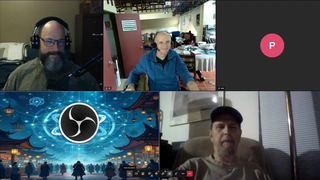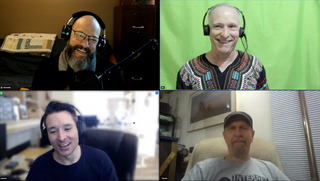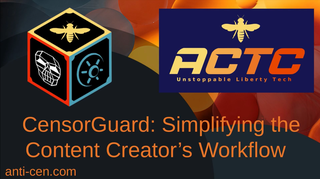
Tuesday, July 2, 2024
In this article, we are introducing CensorGuard, a system that makes posting to the InterPlanetary File System (IPFS) easy and has other useful functions.
In our previous article Our Approach Part One: Seek Alternatives and Spread Content, we discussed how the Web got corrupted as it became more centralized. With that in mind, we discussed using alternative (though generally still centralized) platforms and using ContentSafe (created by one of our founders, Matt Raymer) to spread a creator's content across more than a dozen platforms. This has the essential benefits of:
ContentSafe is an excellent strategy for content creators to pursue. That said, it's still technically possible for those who control the platforms to remove the content, and consumers might not know to move to another platform when content disappears. It's also possible that government threats may result in content being removed from many platforms at once.
What we need is a system where:
On top of that, we'd still want a convenient publishing system, so that content creators can maximize their focus on creating content.

We've previously discussed IPFS in our post Easily Access IPFS from Brave!, and we recommend checking out that article for more information on the topic. The bottom line is that it is a decentralized file-sharing system, akin to Torrent on steroids. Viewing files on that system assists in their propagation and actually speeds up download speeds. When information propagates across IPFS, it becomes nearly impossible to remove it. As long as any node has the data, it will be accessible using its unique content identifier (CID).
As shown in that previous article, the Brave Browser makes it quite easy to set up an IPFS node to access and share data. One of the major problems with IPFS is that to find content you'll generally need to find where somebody has indexed it, providing a CID to access it. You'll also have to trust that they've accurately described the content. CensorGuard is here to address that problem and more.

Here at the Anti-Censorship Technical Committee (ACTC), we are working to promote and develop CensorGuard, because we think it can be amazingly useful for content creators and consumers by covering 3/4 of the content creator needs listed above straight out of the box, while #4 (monetization) can be handled with further development.

CensorGuard has been developed primarily by Thomas Freedman who developed the Pirate Box and Pirate Stick. Be sure to check out Ernest Hancock's interview of Thomas Freedman from Midfest in 2023, where they discuss Thomas' efforts.

Matt Raymer has also participated in the development of this system. While the Pirate Box and Stick platforms made it easy to publish to IPFS (among other functions), CensorGuard evolves the platform and adds ARNIIE, making it more useful for content creators and consumers.
ARNIIE is an acronym for the Alexandria Rescue Network of Independent IPFS Engines. "Alexandria" is a reference to the Library of Alexandria that was a massive collection of human knowledge in Egypt that, in some accounts, burned in 48 BC. The concern is that the modern internet is an analogous great store of knowledge being "burned" by censorship today. See James Corbett's Corbett Report Episode on the topic.
CensorGuard nodes establish ARNIIE as a decentralized network layer that makes use of IPFS but expands the capabilities, including:
There are plans to take this further, including:
Another major function that CensorGuard will provide is a seamless connection with the ContentSafe syndication service. When a content creator pushes content into their CensorGuard device, it will not only be published on IPFS via ARNIIE, it will also be pushed out to normal Web platforms, maximizing viewership by normal content consumers.
Just as ContentSafe is a functioning service today, functional CensorGuard prototypes exist (I have one!), but further development should be pursued in order to at least:
This has only been a quick introduction to CensorGuard and ARNIIE. Keep an eye on our site for more as we continue to share our efforts moving forward, and sign up for email updates, so that we can keep you informed!
We are looking to expand our media presence, now, and we will be working to get early versions of CensorGuard into the hands of our favorite dissident content creators!
--Mark-A-Billy

Thursday, September 25, 2025

Friday, August 15, 2025

Sunday, June 15, 2025

Monday, May 19, 2025

Wednesday, April 30, 2025

Sunday, December 8, 2024

Sunday, October 20, 2024

Sunday, October 6, 2024

Sunday, September 15, 2024

Tuesday, August 13, 2024

Thursday, August 22, 2024

Tuesday, August 13, 2024

Sunday, August 4, 2024

Tuesday, July 2, 2024

Wednesday, June 26, 2024

Sunday, June 2, 2024